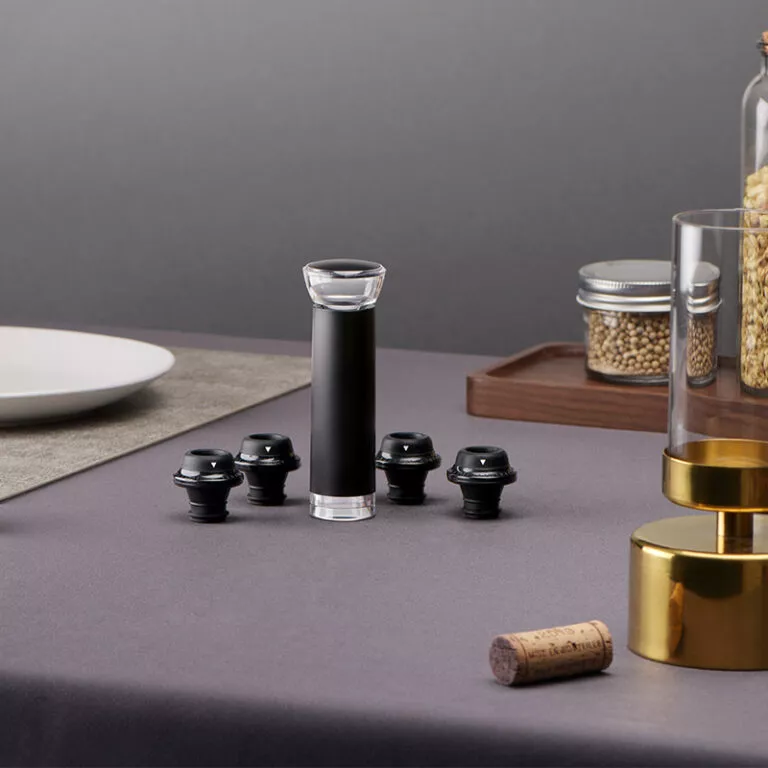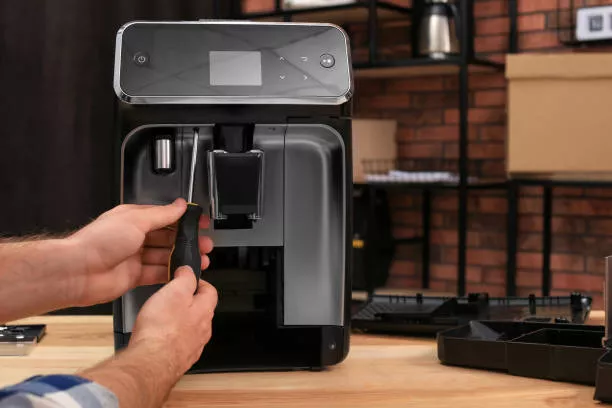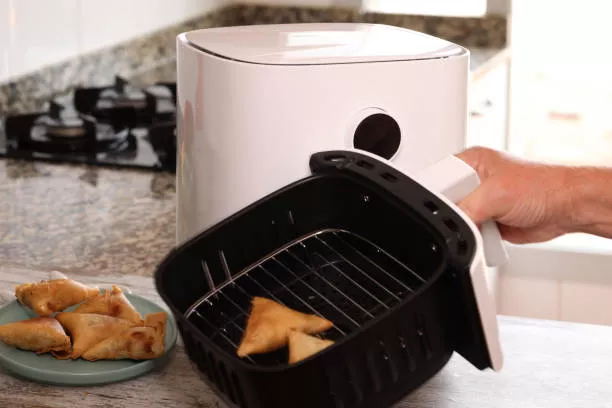Ever wondered if there’s a difference between a pepper grinder and a pepper mill? The terms are often used interchangeably, but there are subtle differences.
The main difference between a pepper grinder and a pepper mill lies in the mechanism. Mills are typically manual and use a more robust grinding mechanism, while grinders are often electric or have simpler designs.
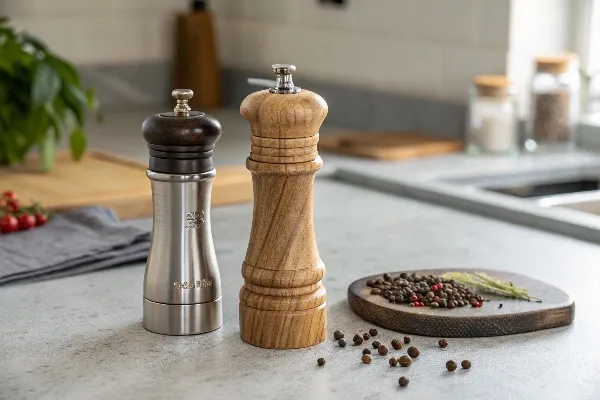
Although both tools serve the same purpose, their design and the way they grind pepper differ. Let’s dive deeper into how these two tools compare and which one might suit your needs better.
What’s the difference between a pepper grinder and a pepper mill?
Are you unsure whether to buy a pepper grinder or a pepper mill? Let’s break down the key differences and how each affects your cooking.
Pepper mills are typically manual tools with a more intricate grinding mechanism, while pepper grinders1 are often electric or have simpler mechanisms for grinding pepper with ease.
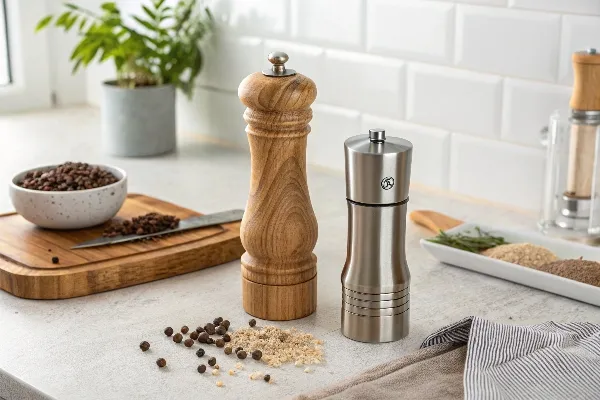
The primary difference between a pepper grinder and a pepper mill lies in their grinding mechanisms2. Pepper mills are often manual, requiring you to twist or turn a handle to grind the pepper. The mill uses a burr grinding system, which grinds the peppercorns uniformly by crushing them between two rotating surfaces. This process provides a finer and more consistent grind, making it ideal for culinary use where precision is important.
On the other hand, pepper grinders are often electric, powered by batteries or rechargeable mechanisms. While they offer convenience, especially when you need to grind large quantities of pepper quickly, their grinding mechanisms can be simpler and sometimes less consistent than those in pepper mills. Some grinders use a blade to chop the peppercorns, resulting in a less uniform grind.
For a more artisanal, hands-on approach to seasoning, a pepper mill is a better choice. However, for ease and efficiency, an electric pepper grinder is ideal. It’s up to you to decide which tool best suits your cooking habits.
Is Ceramic or Plastic Pepper Grinder Better?
Are you debating between a ceramic or plastic pepper grinder? Let’s look at which material might be the best choice for your kitchen.
Ceramic pepper grinders3 are more durable and offer a better grinding performance, but plastic grinders are more affordable and lightweight. Each has its pros and cons depending on your needs.
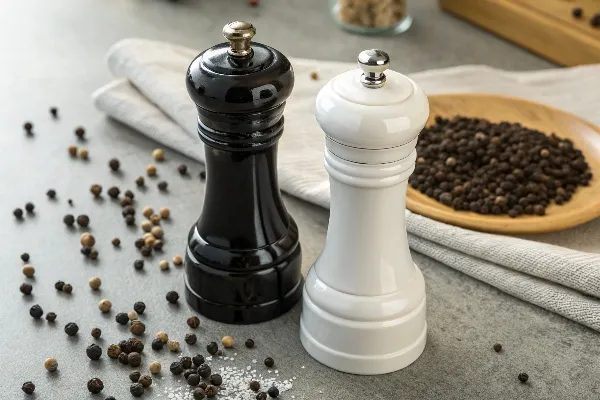
When choosing between ceramic and plastic pepper grinders, it’s important to consider durability, performance, and cost. Ceramic grinders are often the preferred option for serious cooks because they are durable and provide a uniform grind. Ceramic doesn’t absorb moisture, so it’s ideal for grinding spices like pepper, which can release oils during grinding. They also tend to last longer and offer a more precise grind compared to plastic grinders.
Plastic grinders, however, are lightweight and typically more affordable. They may not last as long as ceramic grinders, especially under frequent use, but they are a great budget-friendly option for everyday kitchen use. Plastic grinders also tend to be easier to handle because of their lighter weight, making them convenient for people who don’t want to deal with the bulk of heavier mills.
Ultimately, if you want a long-lasting, reliable tool for grinding pepper, a ceramic grinder is the better choice. But if you’re looking for an affordable, lightweight option for casual use, a plastic grinder will get the job done.
How Do Chefs Grind Pepper?
Ever wondered how chefs get the perfect grind for their pepper? Let’s take a look at the techniques they use.
Chefs often use manual pepper mills to grind fresh pepper because they provide more control over the grind size and consistency4, resulting in a superior flavor for dishes.
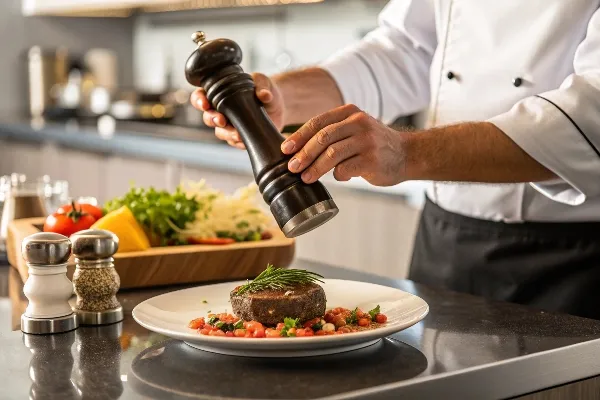
Chefs prefer to grind their own pepper because fresh ground pepper has a significantly better flavor than pre-ground pepper. The process of grinding peppercorns immediately before use releases essential oils that are key to its aroma and taste. Manual pepper mills are often the tool of choice in professional kitchens because they offer greater control over the grind size and texture.
By using a manual pepper mill, chefs can adjust the grind to suit the dish they are preparing. For example, a finer grind may be used for sauces or soups, while a coarser grind may be better for meats or salads. This level of control allows chefs to extract the maximum flavor from the peppercorns, making the pepper a crucial part of the dish’s seasoning.
While electric grinders are convenient, they lack the same level of precision and control. Chefs prefer the tactile nature of grinding their own pepper with a mill, as it enhances the cooking experience and results in a more flavorful outcome.
Are Plastic Pepper Grinders Good?
Are plastic pepper grinders a good choice, or should you avoid them? Let’s evaluate their pros and cons.
Plastic pepper grinders are affordable and lightweight, making them a good choice for casual use. However, they may not be as durable as metal or ceramic grinders and might wear out faster.

Plastic pepper grinders are popular due to their affordability and lightweight design. They are a good choice for casual cooks who want an easy-to-use, budget-friendly grinder. They’re available in various styles and sizes, making them a versatile option for most kitchens.
However, plastic grinders have a downside. They are generally less durable than metal or ceramic grinders and may wear out or crack over time, especially with frequent use. Additionally, plastic grinders may not provide as consistent a grind as more robust models. The mechanism inside a plastic grinder can sometimes struggle to crush peppercorns uniformly, leading to an uneven grind.
If you are looking for a grinder that’s more durable and provides a more consistent grind, you might want to invest in a ceramic or metal pepper grinder. But if you’re just looking for a basic grinder for occasional use, a plastic model will do the job just fine.
Conclusion
Choosing the right pepper grinder or mill depends on your preferences and cooking style. Whether you opt for a manual pepper mill, a ceramic grinder, or a large restaurant-style grinder, each option offers unique benefits for different needs.
-
Learn about the convenience and efficiency of pepper grinders, perfect for quick seasoning in your kitchen. ↩
-
Discover various grinding mechanisms and how they impact the flavor and texture of your spices. ↩
-
Explore the advantages of ceramic pepper grinders for durability and performance in your kitchen. ↩
-
Learn how adjusting grind size can elevate your cooking and enhance the taste of your meals. ↩

